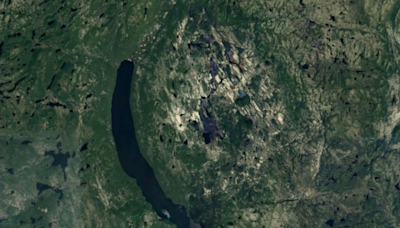Search results
5 hours ago · The Moon is Earth 's only natural satellite. It orbits at an average distance of 384,400 km (238,900 mi), about 30 times the diameter of Earth. Tidal forces between Earth and the Moon have synchronized the Moon's orbital period (lunar month) with its rotation period (lunar day) at 29.5 Earth days, causing the same side of the Moon to always ...
1 day ago · Ganymede, or Jupiter III, is the largest and most massive natural satellite of Jupiter, and in the Solar System. Despite being the only moon in the Solar System with a substantial magnetic field, it is the largest Solar System object without a substantial atmosphere. Like Saturn 's largest moon Titan, it is larger than the planet Mercury, but ...
1 day ago · Sirius is the brightest star in the night sky. Its name is derived from the Greek word Σείριος (Latin script: Seirios), meaning lit. 'glowing' or 'scorching'. The star is designated α Canis Majoris, Latinized to Alpha Canis Majoris, and abbreviated α CMa or Alpha CMa. With a visual apparent magnitude of −1.46, Sirius is almost twice ...
5 hours ago · Aurora australis seen from the ISS, 2017 [1]. An aurora [a] (pl. aurorae or auroras), [b] also commonly known as the northern lights (aurora borealis) or southern lights (aurora australis), [c] is a natural light display in Earth's sky, predominantly seen in high-latitude regions (around the Arctic and Antarctic).
5 hours ago · These satellite measurements have estimated rates of sea level rise for 1993–2017 at 3.0 ± 0.4 millimetres (1 ⁄ 8 ± 1 ⁄ 64 in) per year. [64] Satellites are useful for measuring regional variations in sea level. An example is the substantial rise between 1993 and 2012 in the western tropical Pacific.




